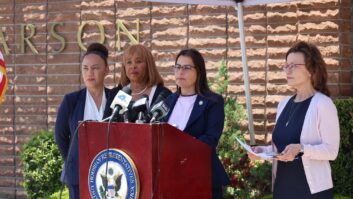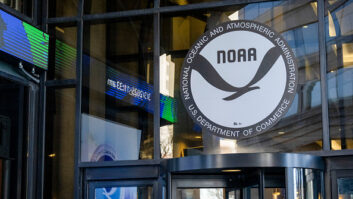There is movement on the EAS front in preparation of the FCC EAS compliance deadline that’s looming less than a year from now.
The next round of FEMA IPAWS regional tests are scheduled to take place on Nov. 17. This test will be conducted with the support of state broadcast associations in Arizona, Minnesota, Nevada, New Mexico, Utah and Wisconsin, and will originate at 1:20 p.m. PST/2:20 p.m. MST/3:20 p.m. CST from the IPAWS booth at the International Association of Emergency Managers annual meeting in Las Vegas.
Then, beginning on New Year’s Day 2016, the Federal Emergency Management Agency will begin to include the new all-U.S. “000000” geocode along with the currently used Washington geocode for any nationwide Emergency Alert Notification.
This will ensure that any EAN is compatible with both currently used EAS device settings and EAS devices configured to be compliant with Part 11 rules. Those Part 11 rules, which detail the FCC’s EAS requirements, go into effect on July 30, 2016.
As a result of this action by FEMA, EAS participants can begin to update their EAS devices to comply with the new rules regarding the all-U.S. geocode and handling of a national period test, or NPT, at any time after Jan. 1 without the possibility of creating a reduction in service for a national EAN message.
To keep apace, device manufacturers have begun to release software and firmware updates that will enable their devices to comply with the new set of EAS rules, which were established by the FCC in its Sixth Report and Order in July of this year. Those guidelines establish a new national location code, a new national periodic test event code, a new EAS Test Reporting System, and rules for visual EAS messages.
These announcements were made at broadcast clinic during the Wisconsin Broadcasters Association, Radio World has learned. The Wisconsin Broadcast Clinic is an annual event supporting the north central broadcast engineering community, and this year was collocated with the Society of Broadcast Engineers National Meeting.







